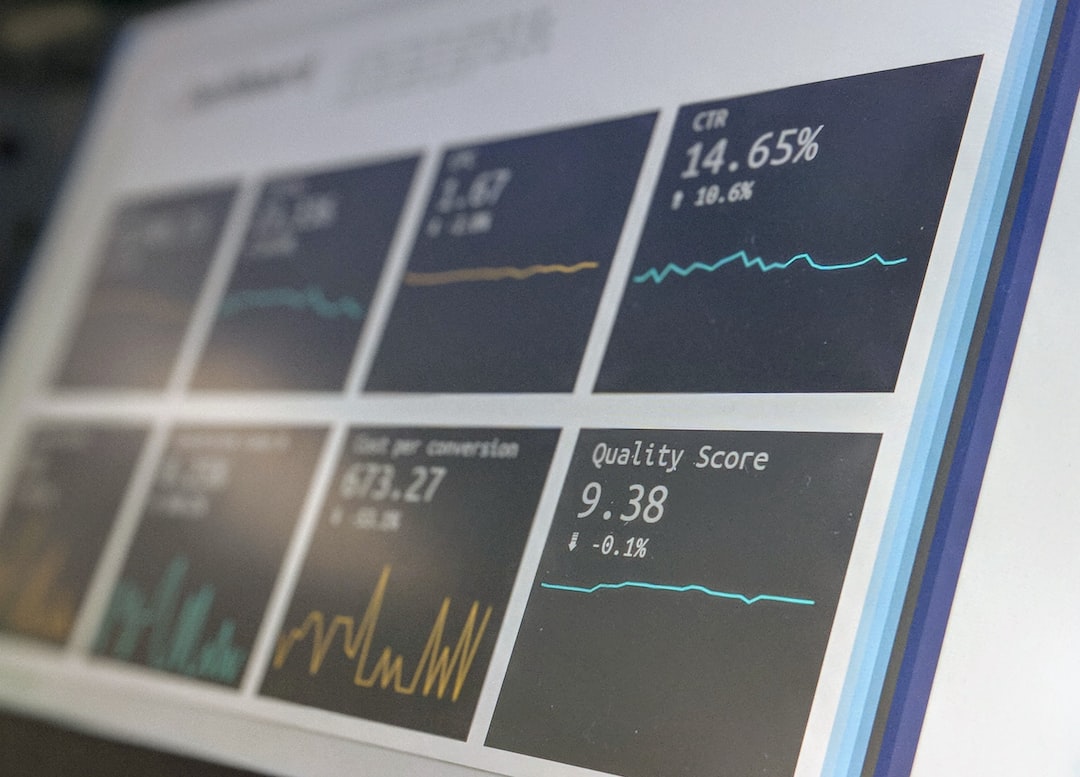In today’s fast-paced business world, data is king. Companies are constantly collecting and analyzing data to make informed decisions and drive business success. This is especially true in the B2B (business-to-business) sector, where companies rely on data to understand their customers, track sales, and measure the success of their marketing efforts.
But data alone is not enough. In order to truly harness the power of data, B2B companies must also focus on metrics sharing. In this article, we’ll explore the importance of metrics sharing in B2B, and how it can lead to business success.
Why is Metrics Sharing Important in B2B?
Metrics sharing is a highly crucial and integral process that entails the sharing of valuable data and insightful information with relevant stakeholders within a company. This serves as a fundamental means of enhancing collaboration, communication, and overall efficiency within the business environment. Specifically in the realm of business-to-business (B2B) operations, metrics sharing involves disseminating indispensable data not only to sales teams and marketing teams but also to a myriad of other pivotal decision-makers who hold the power to significantly impact the overall success and growth trajectory of the organization.
Better Understanding of Customers
One of the main benefits of metrics sharing in B2B is gaining a better understanding of customers. By sharing data and insights across departments, companies can get a more complete picture of their customers’ behaviors, preferences, and needs.
For example, if the marketing team shares data on website traffic and lead generation with the sales team, the sales team can use this information to tailor their sales pitches and better understand the needs of potential customers. This can lead to more successful sales and stronger customer relationships.
Improved Collaboration and Alignment
Metrics sharing also fosters an enhanced level of collaboration and alignment amongst different departments within the organization. By openly sharing data, teams are not only provided with a comprehensive overview of the company’s performance but they are also empowered to collaborate in order to identify noteworthy trends and patterns. Consequently, this enables the teams to collectively make data-driven decisions that ultimately have a positive impact on the entirety of the company’s operations and overall success.
For example, if the marketing team shares data on the success of a recent campaign with the sales team, the sales team can use this information to target their sales efforts towards leads that are more likely to convert. This collaboration can lead to a more efficient and effective sales process.
More Accurate Reporting and Analysis
Metrics sharing also leads to more accurate reporting and analysis because when data is openly shared and exchanged among different departments within an organization, it fosters an environment of collaboration and synergy. As a result, the data can be cross-checked, thoroughly examined, and extensively verified by multiple stakeholders with diverse perspectives and expertise. This collaborative approach to metrics sharing facilitates the identification of any discrepancies or errors and ensures that the insights and conclusions drawn from the data are more robust and reliable. Consequently, organizations can make better-informed decisions based on a comprehensive understanding of the data, thereby enhancing the accuracy and effectiveness of their reporting and analysis processes.
For example, if the marketing team shares data on website traffic and lead generation with the sales team, the sales team can verify this data with their own records and provide feedback on the accuracy of the data. This ensures that decisions are based on reliable information, leading to better business outcomes.
How Can B2B Companies Share Metrics?
There are several ways that B2B companies can share metrics and data across departments. Here are a few examples:
Use a SaaS Data Exchange Platform
Sharing metrics using a SaaS data exchange platform can greatly enhance collaboration and data-driven decision-making in B2B companies. With a centralized platform, teams from different departments can easily access and share valuable data and insights, leading to a more comprehensive understanding of the company’s performance. This enables teams to collaborate effectively, identify trends, and make informed decisions that positively impact the overall success of the organization.
Additionally, a SaaS data exchange platform ensures the accuracy and reliability of shared metrics. The platform allows multiple stakeholders to cross-check and verify the data, ensuring that insights and conclusions drawn from the data are robust. This collaborative approach to metrics sharing facilitates more accurate reporting and analysis, enabling B2B companies to make better-informed decisions based on a comprehensive understanding of the data. By leveraging a SaaS data exchange platform, B2B companies can unlock the full potential of their metrics and drive business success.
Share using Google Drive or OneDrive
Google Drive and OneDrive are popular cloud storage and file-sharing platforms that offer convenient ways to share files in a collaborative environment. Both platforms allow users to store, access, and share files from anywhere, making them ideal for remote teams or individuals working on different devices.
When using Google Drive or OneDrive to share files, users can easily create folders and organize their files, making it simple to share specific files or entire folders with others. Users can also set permissions to control who can view, edit, or comment on the shared files, ensuring that only authorized individuals have access. Additionally, both platforms offer real-time collaboration features, allowing multiple users to work on the same document simultaneously, making it easy to collaborate and make changes in real-time.
However, one challenge of sharing files when users are not in the same platform is compatibility. Google Drive and OneDrive are separate platforms, and while they both offer similar features, they may not always be fully compatible with each other. This can lead to formatting issues or loss of certain features when files are shared between the two platforms. Additionally, users may need to convert files to a compatible format before sharing, which can be time-consuming and may result in a loss of data or quality. It is important for users to be aware of these challenges and take necessary precautions to ensure smooth file sharing when using different platforms.
Use Databricks or Snowflake to share data
Using Snowflake or Databricks to share data with customers can be a highly effective way for B2B companies to enhance collaboration and provide valuable insights. Both Snowflake and Databricks offer powerful data sharing capabilities that allow businesses to securely share data with their customers in a controlled and efficient manner.
Snowflake is a cloud-based data platform that provides a secure and scalable environment for sharing data. With Snowflake, B2B companies can create separate data warehouses for each customer, ensuring that data is isolated and protected. This allows businesses to share specific datasets or reports with their customers, enabling them to gain valuable insights and make data-driven decisions. Snowflake also offers advanced security features, such as data encryption and access controls, to ensure that data is protected and only accessible to authorized individuals.
On the other hand, Databricks is a unified analytics platform that enables businesses to collaborate and share data with their customers in real-time. With Databricks, B2B companies can create interactive dashboards and reports that can be shared with customers, allowing them to explore and analyze the data on their own. Databricks also provides powerful data processing capabilities, allowing businesses to perform complex data transformations and analysis before sharing the data with customers.
However, it’s important to note that cost can be a potential issue for small and medium-sized businesses when using Snowflake or Databricks to share data with customers. Both platforms require a subscription or usage-based pricing model, which can be expensive for businesses with limited resources. Additionally, the complexity of setting up and managing these platforms may require additional technical expertise or resources, which can further increase the cost for small and medium-sized businesses. Therefore, it’s crucial for businesses to carefully evaluate their budget and resources before deciding to use Snowflake or Databricks for data sharing with customers.
Real-World Examples of Metrics Sharing in B2B
Let’s take a look at some real-world examples of B2B companies that have successfully implemented metrics sharing strategies.
HubSpot
HubSpot, a leading marketing and sales software company, is known for its strong focus on metrics sharing. The company has a centralized reporting system that integrates with its CRM and marketing automation software, allowing for easy access to data and insights.
HubSpot also holds regular meetings and presentations where teams can discuss data and insights, and collaborate on strategies and goals. This has led to a more data-driven and aligned approach to decision-making, and has contributed to the company’s success.
Salesforce
Salesforce, a cloud-based software company, is another example of a B2B company that prioritizes metrics sharing. The company has a centralized reporting system that integrates with its CRM and other tools, allowing for easy access to data and insights.
Salesforce also encourages open communication between departments, and holds regular meetings and presentations to discuss data and insights. This has led to a more collaborative and data-driven approach to decision-making, and has contributed to the company’s success.
Takeaways
Metrics sharing plays a crucial role in the success of B2B companies by enabling quick decision-making, clear alignment with business goals, and establishing a clearly defined sharing process.
Metrics sharing promotes clear alignment with business goals. This alignment ensures that all teams are working towards the same goals, avoiding silos and promoting collaboration. By having a unified view of the metrics, teams can align their strategies, resources, and efforts to achieve the desired outcomes.
A clearly defined sharing process is essential for effective metrics sharing. Establishing guidelines, protocols, and tools for sharing data and insights ensures that the right information reaches the right people at the right time. This process helps to avoid confusion, duplication of efforts, and misinterpretation of data. It also enables teams to access the most up-to-date and accurate information, facilitating data-driven decision-making throughout the organization.
In conclusion, metrics sharing is of utmost importance in the B2B world. It enables quick decision-making, clear alignment with business goals, and establishes a clearly defined sharing process. By embracing metrics sharing, companies can gain a better understanding of their customers, promote collaboration and alignment, and make more accurate and informed decisions.









